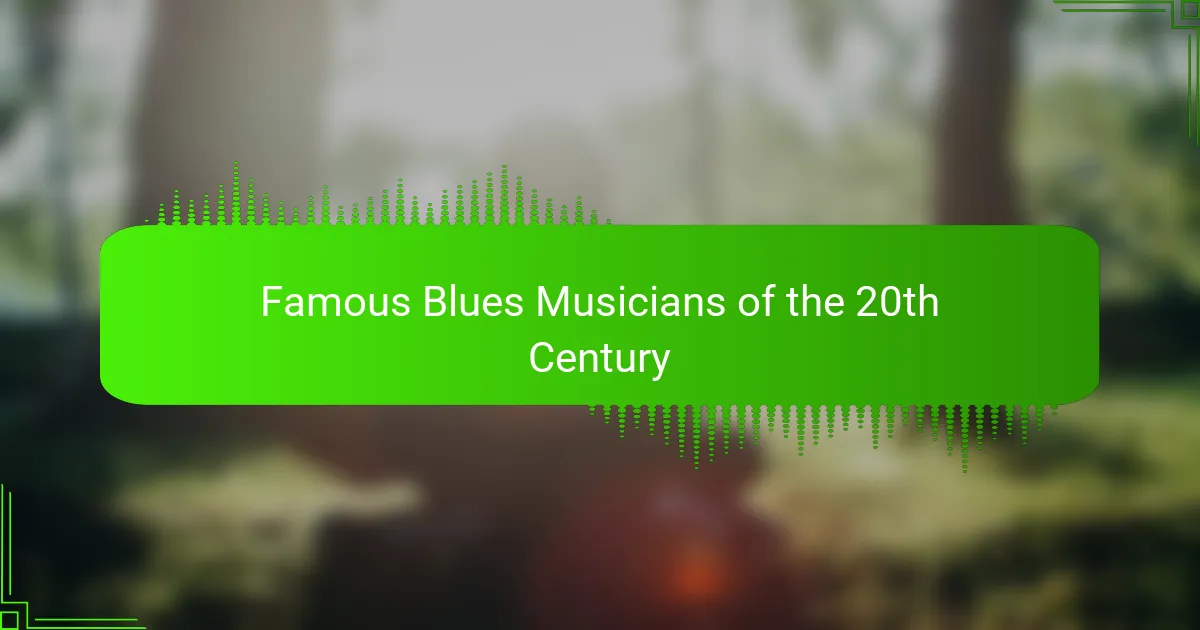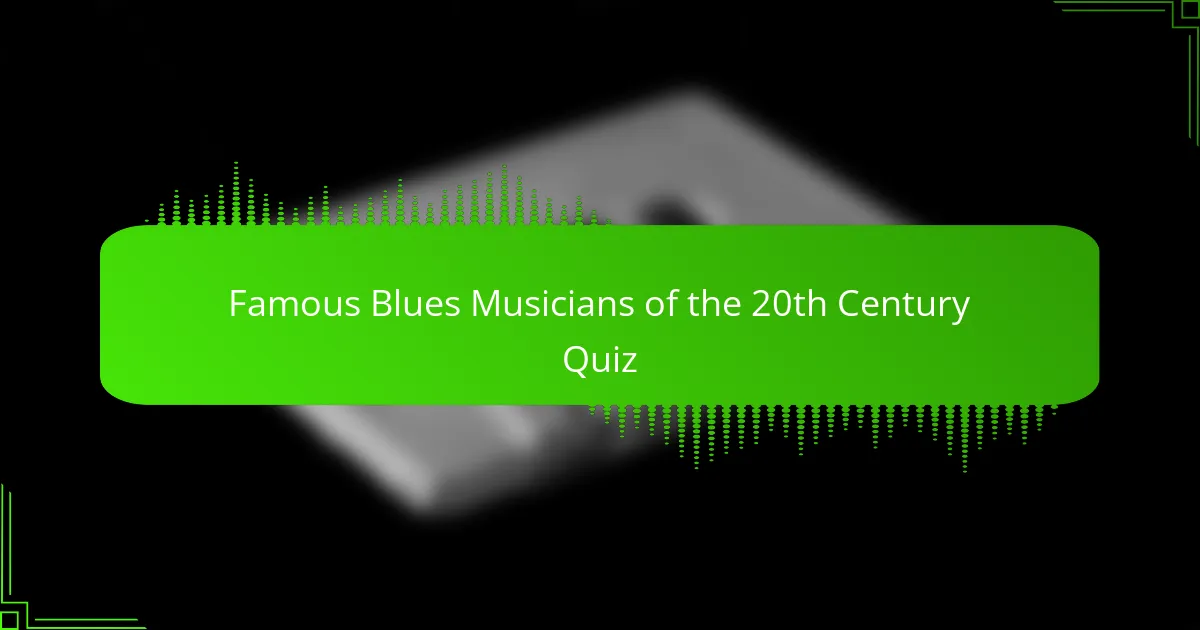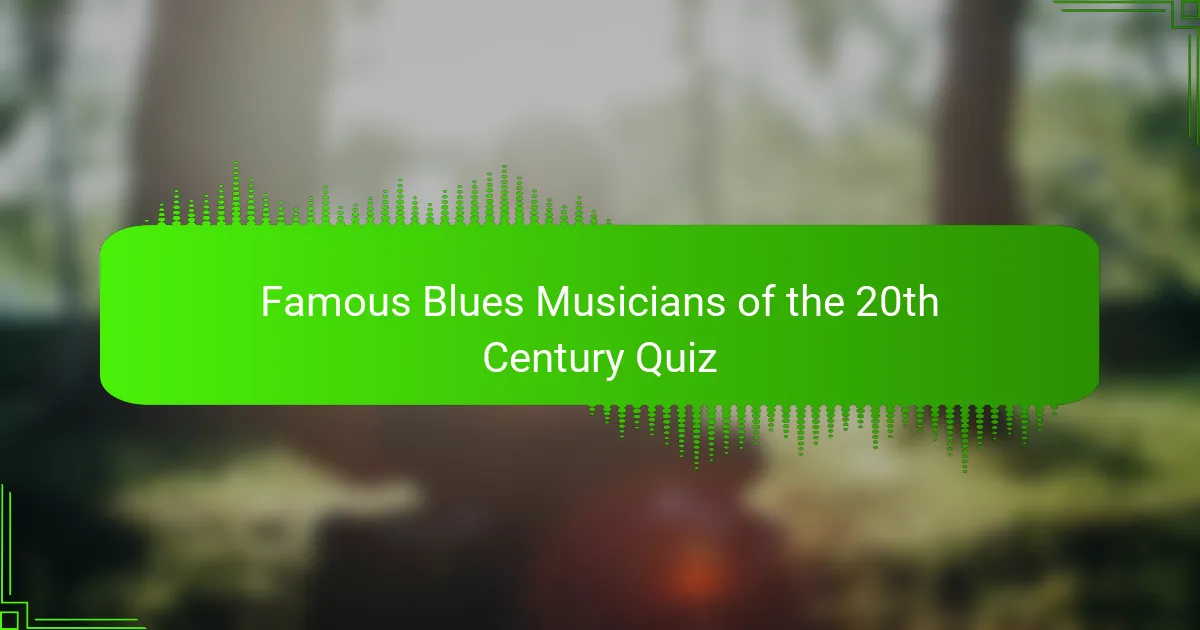
Quiz Completed: Thank You for Participating!
Congratulations on completing our quiz on Famous Blues Musicians of the 20th Century! We hope you enjoyed the experience and had fun testing your knowledge. This quiz not only highlighted some iconic figures in the blues genre but also provided insights into their contributions and the lasting impact they have had on music today.
Throughout this quiz, you likely learned about the origins of blues music, the cultural significance of various musicians, and how their distinct styles have influenced today’s artists. Each question was designed to deepen your understanding of this vibrant genre and the legends who shaped it. Whether you discovered new names or reinforced your existing knowledge, there’s always something new to learn from the world of blues.
To further expand your knowledge, we invite you to explore the next section on this page dedicated to Famous Blues Musicians of the 20th Century. Here, you will find detailed biographies, influential recordings, and fascinating stories that bring these musicians to life. Dive in to uncover more about the rich history and cultural heritage that blues music embodies!

Famous Blues Musicians of the 20th Century
The Origins of Blues Music in the 20th Century
Blues music emerged in the early 20th century, deeply rooted in African American history. Originating from the Deep South, it evolved from spirituals, work songs, and folk music. Delta Blues, characterized by its raw emotional power, showcased artists like Robert Johnson. He is often regarded as a pivotal figure in shaping the sound and themes of blues music, influencing countless musicians who followed.
Influential Delta Blues Musicians
Delta Blues is defined by its signature sound and profound storytelling. Notable musicians include Son House and Muddy Waters. Son House’s emotive guitar styles and haunting vocals set a foundation for the genre, while Muddy Waters brought electric blues to a wider audience. His 1950s hits, such as “Hoochie Coochie Man,” transformed the blues landscape.
The Chicago Blues Scene
The Chicago Blues movement arose in the 1950s as musicians migrated north. Artists like Buddy Guy and Howlin’ Wolf played vital roles in popularizing electric blues. Buddy Guy’s unique guitar techniques and energetic stage presence drew attention, while Howlin’ Wolf’s gritty voice became iconic. This scene laid the groundwork for the blues’ integration into rock music.
Key Female Blues Musicians
Women significantly contributed to the blues genre in the 20th century. Bessie Smith, known as the “Empress of the Blues,” became one of the highest-paid black performers of her time. Her powerful voice and emotive delivery defined early blues singing. Another key figure is Ma Rainey, who blended traditions with her unique flair. Both women broke barriers and paved the way for future female artists.
Blues’ Impact on Modern Music Genres
Blues music profoundly impacted various modern genres, particularly rock and jazz. Artists like Eric Clapton and the Rolling Stones cite blues influences in their work. These musicians adapted blues motifs, expanding its reach and relevance. The 20th century blues legacy remains evident in countless songs and styles today, showcasing its enduring significance in music history.
What are the defining characteristics of blues music as demonstrated by famous musicians of the 20th century?
Blues music is defined by its distinctive chord progressions, often using the twelve-bar format, and expressive melodies that convey deep emotion. Famous musicians like B.B. King and Muddy Waters exemplified these characteristics through their music. They used techniques such as call-and-response patterns, improvisation, and lyrical themes that address sorrow, struggle, and resilience, reflecting the African American experience in the early 20th century.
How did the Chicago blues style evolve in the 20th century?
The Chicago blues style evolved in the 1940s as musicians migrated from the rural South to urban centers. Artists like Howlin’ Wolf and Willie Dixon were pivotal in transforming traditional Delta blues into a more electrified sound. This evolution was characterized by the use of electric guitars, amplified harmonicas, and a rhythm section, giving rise to a more robust and energetic musical form that laid the groundwork for rock and roll.
Where did the most influential blues festivals take place in the 20th century?
Determining the location of influential blues festivals can be exemplified by the Newport Jazz Festival and the Chicago Blues Festival. The Newport Jazz Festival, which began in 1954, showcased artists like B.B. King and Lady Day, bridging jazz and blues communities. The Chicago Blues Festival, established in 1984, celebrated local legends and attracted international attention, highlighting the city’s historic significance in the blues genre.
When did the blues music genre gain widespread popularity in America?
Blues music gained widespread popularity in America during the 1920s and 1930s, thanks to the rise of record labels that focused on African American music. The release of Bessie Smith’s recordings in 1923 had a lasting impact, establishing her as a leading figure. The Great Migration also helped spread the genre as rural Southern musicians brought their sound to urban areas, contributing to the blues’ mainstream acceptance.
Who were the key figures in the blues revival of the 1960s?
The blues revival of the 1960s featured key figures such as Eric Clapton, Janis Joplin, and the Butterfield Blues Band. Artists like Clapton paid homage to classic blues musicians, notably by covering works by Robert Johnson. This revival was crucial in reintroducing the genre to new audiences, influencing rock musicians and leading to a resurgence of interest in blues’ rich history and varied styles.

